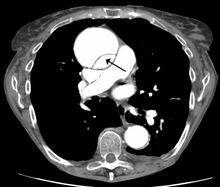In general, there are two properties of general inhalation anesthetics that we should be familiar with. These are 1) the blood/gas partition coefficient and 2) the lipid/gas partition coefficient.
Blood/gas partition coefficient:
The blood/gas partition coefficient is a measure of the solubility of a gas in the blood and is what determines the SPEED OF ONSET of an inhalation anesthetic. If a gas is MORE soluble in the blood, the blood/gas partition coefficient will be higher. If a gas is LESS soluble in the blood, the blood/gas partition coefficient will be lower. In order for a gas to reach the brain, it must be inhaled. Once in the alveoli, the gas must equilibrate with the blood in the capillaries. The speed at which this occurs is determined by how soluble a gas is in the blood. If a gas is MORE soluble in the blood, more gas particles will exist in the blood and thus the blood/gas coefficient will be higher (ex. 200 particles in the blood and 1 particle in the gas suggests slower equilibration, so the coefficient is 200/1, or 200). In effect, it takes more gas particles dissolving in the blood to have the pressures equilibrate. Conversely, if a gas is LESS soluble in the blood, less gas particles will exist in the blood and the gas will have a lower blood/gas coefficient (ex. 1 particle in the blood and 200 particles in the gas suggests very rapid equilibration, or 1/200, or 0.005). In effect, less gas particles need to dissolve for the partial pressures to equilibrate. So, in summary, the speed at which a gas in the alveoli equilibrates with the blood in the capillaries is determined by its solubility in blood, and this then determines the speed of onset of an inhalation anesthetic.
Lipid/gas partition coefficient:
The lipid/gas partition coefficient is a measure of the lipid solubility of an inhalation anesthetic. The higher the lipid/gas coefficient, the more lipid soluble the gas and thus the easier the drug can cross the blood brain barrier. The lipid/gas coefficient is what determines the MAC. The Minimum Alveolar Concentration is defined as the amount of gas necessary to remove reaction to a noxious stimulus (i.e. surgical incision) in 50% of the population, and is actually a percentage of alveolar gas. For example, a gas with an MAC of 2, or 2%, means that its concentration in the alveoli must only be 2% of the total gas within the alveoli at that time in order to remove reaction to noxious stimulus in 50% of people. MAC also determines potency, and potency is expressed as the inverse of MAC, such that potency=1/MAC. So, a gas (Gas A) with a MAC of 2% will have a high potency, since potency=1/2, or 0.5. Gas B, which has a MAC of 75%, will have a low potency, since potency=1/75, or 0.013. So, in summary, the potency of a gas is determined by its MAC, and is expressed as 1/MAC.
It is absolutely possible to have a drug with high blood solubility and low lipid solubility, such that time of onset is slow and potency is low. The opposite (fast onset and high potency) is also true, and, as pointed out, is what makes for a favorable inhalation anesthetics. Hope this helps.





